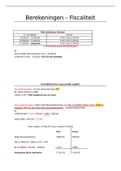Resume
Summary Artikelen personnel economics Rijksuniversiteit Groningen (RUG)
- Cours
- Établissement
The titles and authors of the articles that are summarized are shown in the first two pages of the summary. You can freely viewing these pages. Good luck with reading!
[Montrer plus]




